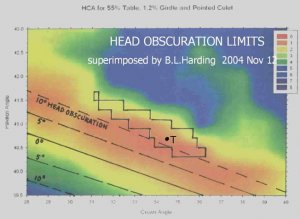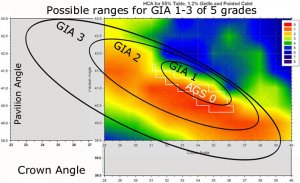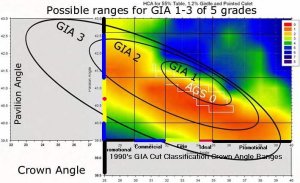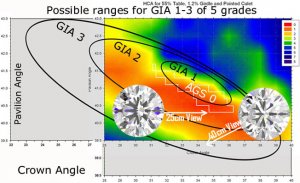Sorry to interrupt. I just became aware of this thread and have not yet read it through. However, I saw this color map which is similar to many I have seen before, and thought it worthwhile to show the head obscuration limits on it, which explain why the favored proportions are near the upper boundary of the ''best'' stones. The dark boxes, I understand, are AGS'' new grading zones.
Old timers note that I have switched from my infamous term ''obstruction'' to ''obscuration'', which Peter Yantzer pointed out is more appropriate because of its optical connotation and usage; Garry no longer need be bothered by visions of childbirth problems.










300x240.png)